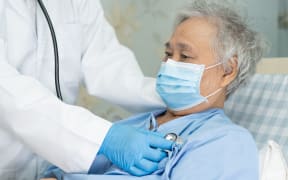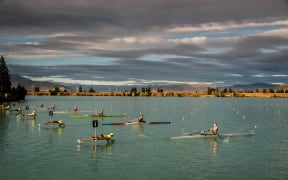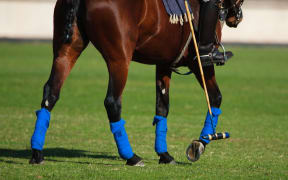Omicron has ripped through the Australian states of New South Wales and Victoria, exposing testing regimes, decimating supply chains and causing the country's deadliest days of the pandemic despite high vaccination rates.
So is that New Zealand's fate as well?
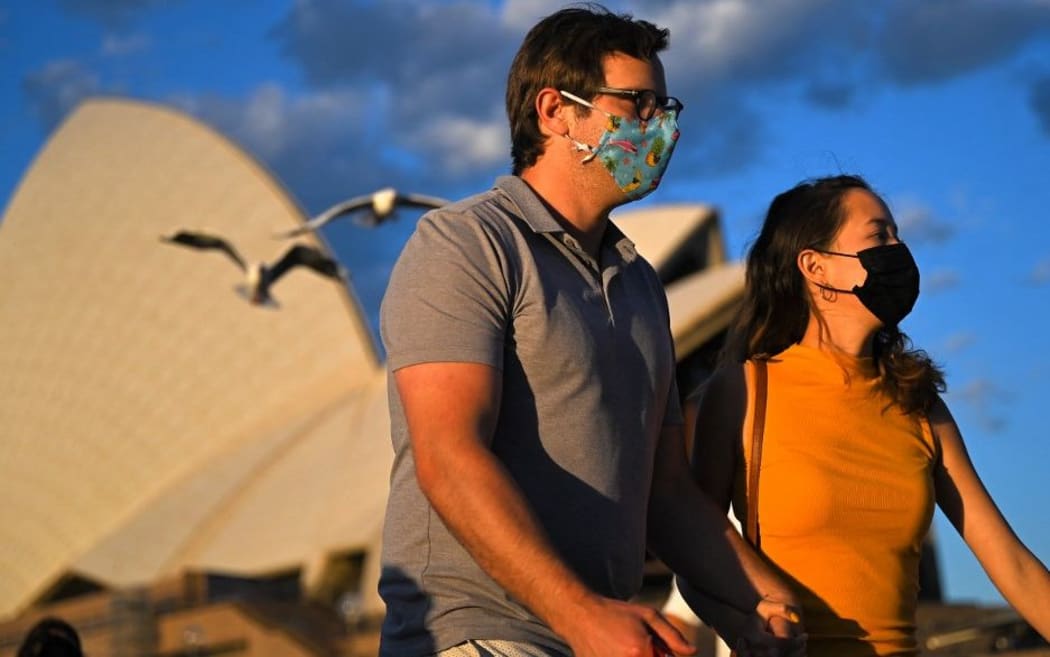
File photo. Photo: AFP
RNZ spoke to a trio of experts in Australia who say Aotearoa can and should do better.
When Omicron arrived in Australia in late November, governments followed through on plans to relax restrictions.
University of Sydney epidemiologist Alexandra Martiniuk said that was the first mistake.
"If we had gone a bit lower and slower on our curve we would've put the pressure on our systems over a longer period of time - yes, but it would've been slower so we probably would've experienced less of the crises we did experience and importantly, this is hypothetical I suppose, more people might have been saved."
As the pressure built on the health system due to the number of cases, it affected the quality of care across the system.
It also removed vast numbers out of the workforce as they isolated awaiting test results or from infection itself.
The key to suppressing the curve was:
- getting vaccinated and a booster as soon as possible
- wearing a quality mask
- thinking about physical distancing and preferably meeting people outdoors
- scanning in
- getting tested and isolating if symptomatic.
New Zealand epidemiologist Tony Blakely, from the University of Melbourne, agreed and said the elderly and at-risk needed to exercise extra caution over the coming weeks and months.

University of Melbourne epidemiologist Tony Blakely. Photo: Billy Wong/University of Auckland
About half of New Zealand's population was likely to contract Omicron during the outbreak and that was okay, Blakely said.
The key to minimising death and disruption was about who caught it and when.
"The two tricks are: having accepted that burden of infection coming through, to squash it and spread it out over time so it doesn't overwhelm health services. And the second is to try to tip away the infections from the people who have the highest risk of morbidity and mortality. So people who have comorbidities, are immunocompromised or who are elderly," he said.
In essence, the pair believed New Zealand should look to prolong the outbreak, which might sound counter-intuitive, but a steady stream of cases over months was going to be better than a flood over weeks. Much in the same way the tide coming in over six hours did not cause a problem, but a tsunami did.
Another thing on Aotearoa's side was the rate of Delta.
Australia was still dealing with 1300 cases a day of the far deadlier variant when Omicron arrived.
Blakely said as a result Australia had been fighting two epidemics.
"It's utterly clear - Omicron is less severe than Delta. The vast majority of people who get Omicron don't even know they've had it - they're asymptomatic.
"Yes there will be deaths - that's unfortunate. But it's a lot less than had it been Delta with this amount of infectiousness.
"Data is patchy - but in New South Wales two-thirds of people in ICU were Omicron, which means one-third were Delta and probably half of all deaths two weeks ago in New South Wales were among people with Delta. So what's happened? Delta is perhaps only 2-5 percent of all infections out in the community but because it's that much more serious at every step - converting you from asymptomatic to symptomatic, symptomatic to quite sick, quite sick to going to hospital, hospital to ICU, ICU to death - at every point along the way it means even though Delta is a tiny proportion of infections out in the community it's causing a reasonably large fraction of all the hospitalisations and deaths."
So what does that mean for New Zealand?
"The lesson here for New Zealand is keep Delta squashed down," Blakely said.
As Omicron spiralled in the community, contact tracing should focus on Delta cases, he said.
He described the New Zealand government's plan to deal with Omicron, released earlier this week, as brilliant.
"I really like the way that they've laid out what's going to happen and how close contacts are going to change, the number of days will get less as you go through before you can go back to work - it's exactly like I would've designed it if I'd been asked to design it. It's very good."
However, a degree of flexibility was needed as the pandemic had shown it could throw a curveball even at the best-laid plans.
Stock up on supplies, meet loved ones
Australasian Epidemiological Association president Brigid Lynch said it appeared Omicron was potentially as severe as the wild variant identified in Wuhan in late 2019, but far more contagious.
However, unlike in early 2020, there were effective vaccines that drastically curbed serious illness and death.
Far more was also known about the virus' transmission.
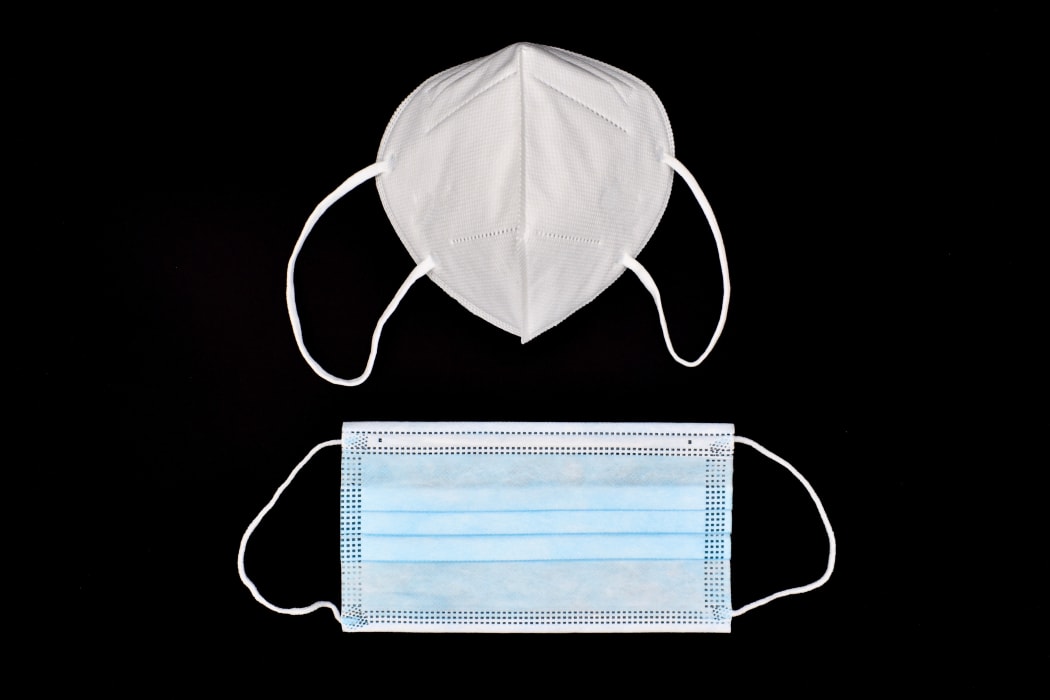
Disposable KN95 mask pictured above a surgical mask. Photo: 123rf
To that end high-quality masks, especially inside, and quality ventilation could reduce transmission, Lynch said.
"Workplaces and settings like education and aged care, we really should have had good ventilation measures - HEPA filters and things that will improve the air quality. Those are things that will be important going forward over the next few years."
A large and readily available supply of rapid antigen tests could also help in reducing transmission in high-risk or high-density settings, like schools, aged care and health facilities.
Martiniuk said another thing for people to consider now ahead of widespread infection and while time was still on your side was to get ready at home.
Putting some pre-prepared meals into the freezer, stashing some electrolyte drinks and having enough paracetamol and ibuprofen for a week might make the difference between a testing or a terrible time at home with the virus - especially if people had children to care for and consider as well.
Now was also the time to do some last-minute things for self-care, she said.
"It's silly but it's actually quite useful, but now is the time to go get your haircut, to go see your loved ones in aged care residences, to get your kids together with their friends - still outdoors preferably, to get a doctor's appointment for your chronic illness that might need a prescription refill.
"Get it all done as if you're going on a big vacation because in a month or two if cases are very high, those are the kind of things you won't want to be doing."
But all three epidemiologists agreed - while Omicron was already here, New Zealand did not need to suffer its worst effects.
